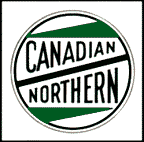| It is currently Tue Apr 23, 2024 1:09 pm |
|
All times are UTC - 5 hours [ DST ] |
PRR T1 Trust posted update
Moderators: Rick Rowlands, tomgears, Randy Hees
 
|
Page 3 of 4 |
[ 58 posts ] | Go to page Previous 1, 2, 3, 4 Next |
|
| Author | Message | ||
|---|---|---|---|
| Tom F |
|
||
|
Joined: Mon Jul 02, 2018 8:04 pm Posts: 314 |
|
||
| Kelly Anderson |
|
||
|
Joined: Tue Sep 14, 2004 7:52 am Posts: 2573 Location: Strasburg, PA |
|
||
| Rick Rowlands |
|
||
|
Joined: Thu Sep 22, 2011 4:29 pm Posts: 1899 Location: Youngstown, OH |
|
||
| Nova55 |
|
||
|
Joined: Thu Apr 12, 2007 8:09 pm Posts: 563 |
|
||
| joe6167 |
|
||
|
Joined: Sun Jun 17, 2007 8:03 pm Posts: 1073 Location: Warszawa, Polska |
|
||
| Paul D |
|
||
|
Joined: Sat Jan 22, 2005 1:02 pm Posts: 128 Location: Mi |
|
||
| jasonjohnson |
|
||
|
Joined: Mon May 26, 2008 9:25 pm Posts: 58 |
|
||
| Tom F |
|
||
|
Joined: Mon Jul 02, 2018 8:04 pm Posts: 314 |
|
||
| Tom F |
|
||
|
Joined: Mon Jul 02, 2018 8:04 pm Posts: 314 |
|
||
| Ron Travis |
|
||
|
Joined: Sun May 15, 2005 2:22 pm Posts: 1543 |
|
||
| SD70dude |
|
|||
Joined: Tue Feb 20, 2018 7:08 pm Posts: 317 Location: Alberta, Canada |
|
|||
| PaulWWoodring |
|
||
|
Joined: Fri Aug 27, 2004 4:02 pm Posts: 1751 Location: Back in NE Ohio |
|
||
| joe6167 |
|
||
|
Joined: Sun Jun 17, 2007 8:03 pm Posts: 1073 Location: Warszawa, Polska |
|
||
| Great Western |
|
||
|
Joined: Fri Apr 26, 2013 5:56 pm Posts: 411 Location: Ontario, Canada. |
|
||
 
|
Page 3 of 4 |
[ 58 posts ] | Go to page Previous 1, 2, 3, 4 Next |
|
All times are UTC - 5 hours [ DST ] |
Who is online |
Users browsing this forum: Google [Bot], NVPete, The_Pine29 and 195 guests |
| You cannot post new topics in this forum You cannot reply to topics in this forum You cannot edit your posts in this forum You cannot delete your posts in this forum You cannot post attachments in this forum |

